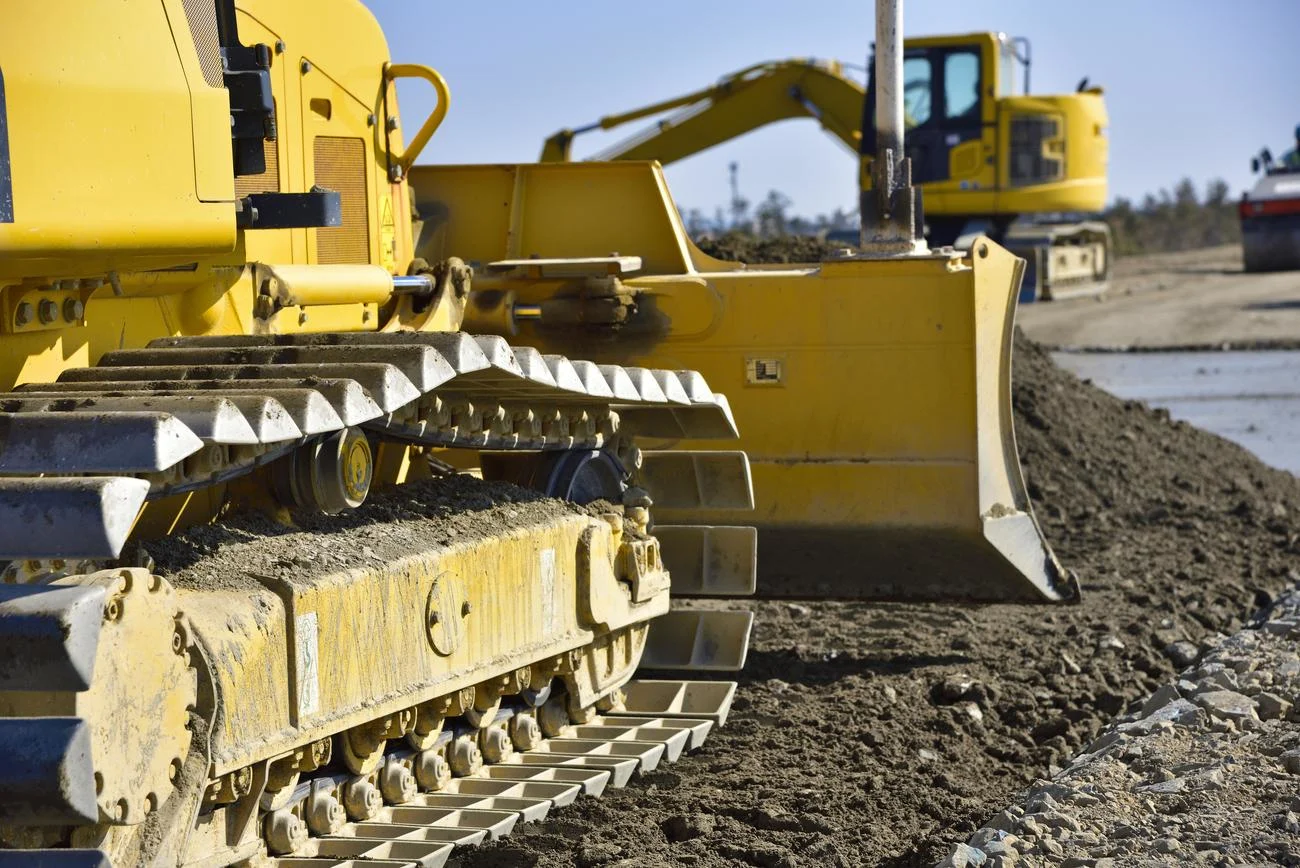
Renewable solutions
5 minute read
How renewable diesel is taking over in heavy machinery – and why
Heavy-duty machinery – vehicles and other equipment designed to perform intensive tasks in demanding conditions – is largely responsible for the modern built environment. Machines like cranes, excavators, and loaders enable large-scale construction, mining, and manufacturing, and give us the materials and products for the modern world we may take for granted: large buildings, efficient transportation of heavy loads, and so much more. However, operating these machines comes with an environmental cost when they run on fossil-based diesel, which creates substantial greenhouse gas (GHG) emissions.
Why not electrify?
Many types of transportation and heavy machinery are transitioning to electrification, with engines powered by batteries instead of internal combustion. Why not heavy-duty equipment?
Using electric batteries to power fleets of heavy machinery presents several challenges. The limited energy density and range of batteries necessitate frequent recharging or battery swapping, which may lead to additional downtime. Furthermore, complex charging infrastructure, especially in remote locations, requires large-scale investment and extensive time to build.
As battery technology and charging infrastructure improve, electrification may become a good option for heavy-duty machinery. Today, however, research and development must still overcome barriers related to battery size and weight, high upfront costs, battery life degradation, reduced efficiency in demanding environments, and the need for sustainable supply of batteries and electricity.
Switch to renewable fuel possible with existing vehicles and machinery
Renewable diesel represents another more sustainable alternative to fossil diesel in the heavy-duty equipment sector. Topping the list of benefits is the fact that with renewable fuels such as Neste MY Renewable Diesel™ produced from 100% renewable raw materials GHG emissions can be significantly reduced, in the case of Neste’s renewable diesel as much as 75 to 95%* over the fuel’s life cycle when compared to fossil diesel.
Importantly, switching to renewable diesel doesn’t mean one must settle with lower quality; instead, the quality of Neste’s renewable diesel is comparable to the the premium-quality fossil diesels, and as it is a “drop-in” fuel, such renewable diesel can be used in place of fossil diesel with no modifications to vehicles, their engines or fuel distribution infrastructure. A crane, truck, or bulldozer can run on fossil diesel one day, and easily make a switch to renewable diesel the next, making large emissions reductions possible immediately.
With consumers and business customers, investors, and legislators all driving a push for greater sustainability, the use of renewable diesel presents an opportunity for heavy-duty equipment manufacturers and operators – as well as their partners – to demonstrate commitment to change already today, while simultaneously maximizing the return on investments into existing fleets of vehicles and machinery.
The switch to renewable diesel is happening now
Many companies that manufacture and operate heavy-duty equipment have partnered with Neste to reduce their carbon footprint. Liebherr, the leading manufacturer of construction equipment, uses Neste’s renewable fuel at its Kirchdorf plant in Germany, where the company manufactures approximately 2,500 machines annually. Ulrich Heusel, Production Director at Liebherr-Werk Ehingen GmbH, stated that the switch to renewable diesel would replace 2.5 million liters of fossil diesel per year, leading to an annual reduction of roughly 6,500 tons of CO2.
Marr Contracting, a global leader in the design and delivery of heavy-lifting cranes and services, uses renewable diesel (also known as “HVO100”) from Neste in its tower crane fleet in Australia, following a lengthy investigation by the company of how it could most effectively transition away from fossil fuels. According to Simon Marr, Marr’s Managing Director, the switch to renewable diesel supports the company’s sustainability goals while maintaining the speed, power, and reliability of its fleet.
Global mining and metals corporation Rio Tinto is also using Neste MY Renewable Diesel. In January 2023, the company began a second trial to determine the cost-effectiveness and benefits of renewable diesel at its copper operations in Salt Lake City, Utah in the U.S. This follows a similar, successful trial in 2022 by Rio Tinto U.S. Borax in which the use of renewable diesel was found to contribute to high performance and reliability of Rio Tinto's diesel fleet.
And, since April 2023, the Japan-based appliance producer Komatsu has used renewable diesel, such as Neste MY Renewable Diesel, as factory-fill fuel for Komatsu equipment produced in Germany. Its plants in Europe, the UK, and elsewhere will follow.
“Each new partnership represents a big step forward for Neste, our customers, and the industry,” said Mats Hultman, Head of OEM Partnerships at Neste. “Reducing GHG emissions in heavy-duty applications has been challenging, but with our partners, we’re demonstrating that it is possible to make immediate and effective progress.”
Better fuel, healthier planet
Electricity may one day be the primary source of power for heavy-duty machinery. It is also possible that other alternatives such as e-fuels could emerge as sustainable alternatives in the future. The reality, however, is that renewable diesel creates large, scalable emissions reductions today — with no sacrifice in quality, reliability, or efficiency, and no need to abandon existing investments and fuel distribution infrastructure.
Creating awareness around renewable solutions, such as renewable diesel, continues to be one of the main challenges, not only as a way to create customer interest, but also to educate legislators, who have a significant role to play in ensuring that all solutions are effectively harnessed to replace fossil fuels and tackle climate change.
In the meantime, Neste will keep working towards its goal of reducing customers’ GHG emissions by at least 20 million tons annually by 2030, on its way to serving the company’s main vision: to build a healthier planet for our children.
*) The GHG emission reduction varies depending on the region-specific legislation that provides the methodology for the calculations (e.g. EU RED II 2018/2001/EU for Europe and US California LCFS for the US), and the raw material mix used to manufacture the product for each market.
Credits: Neste




